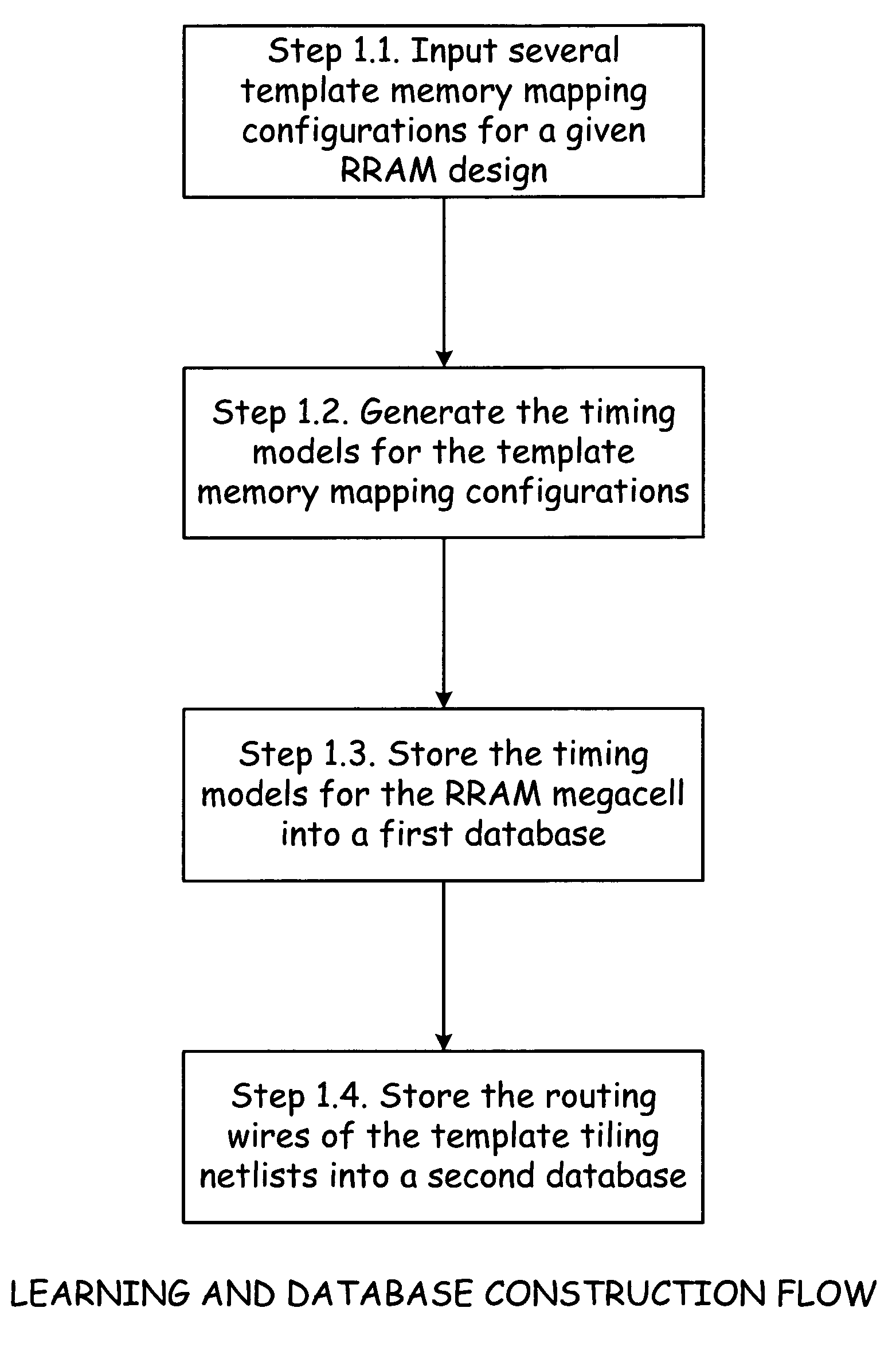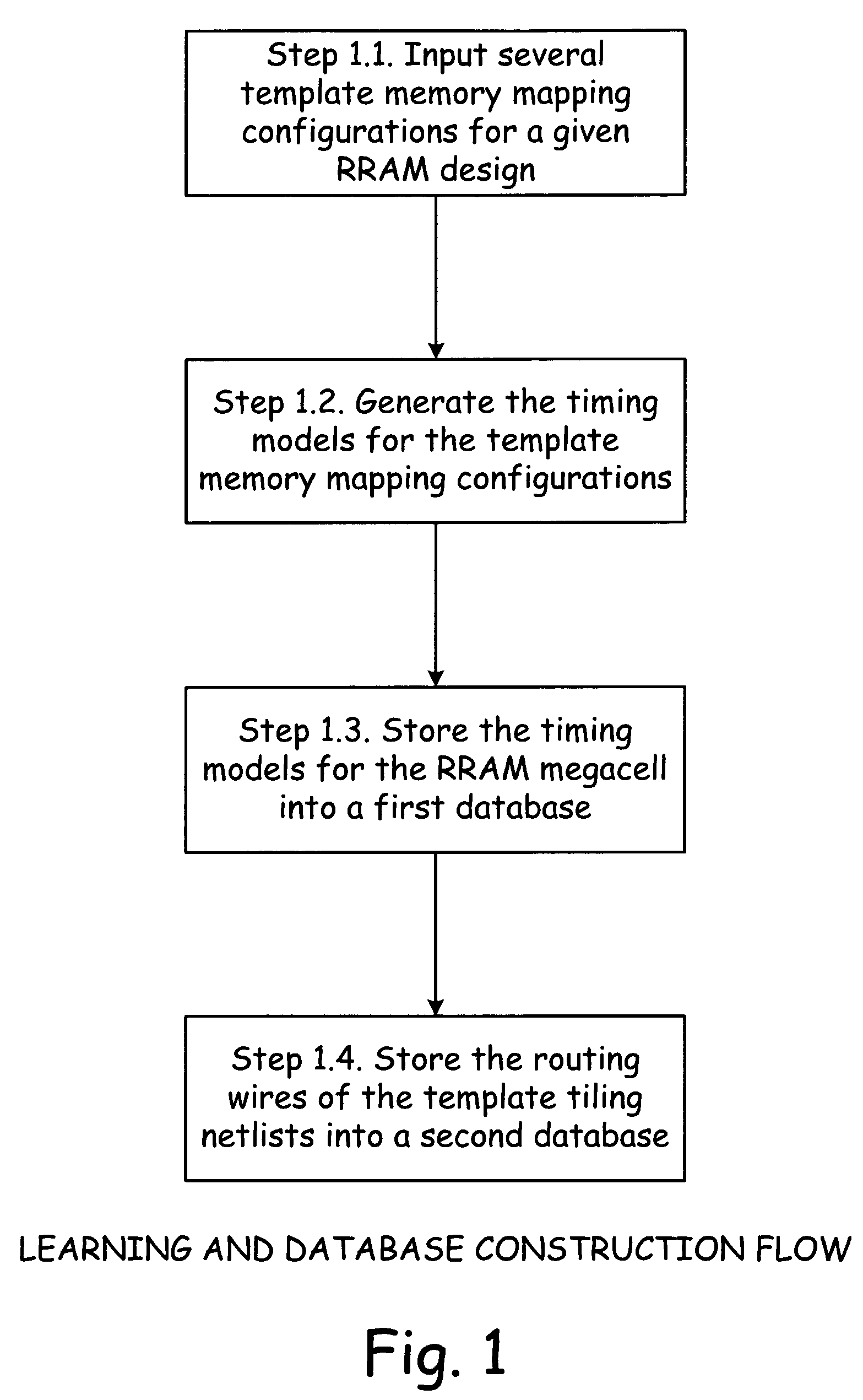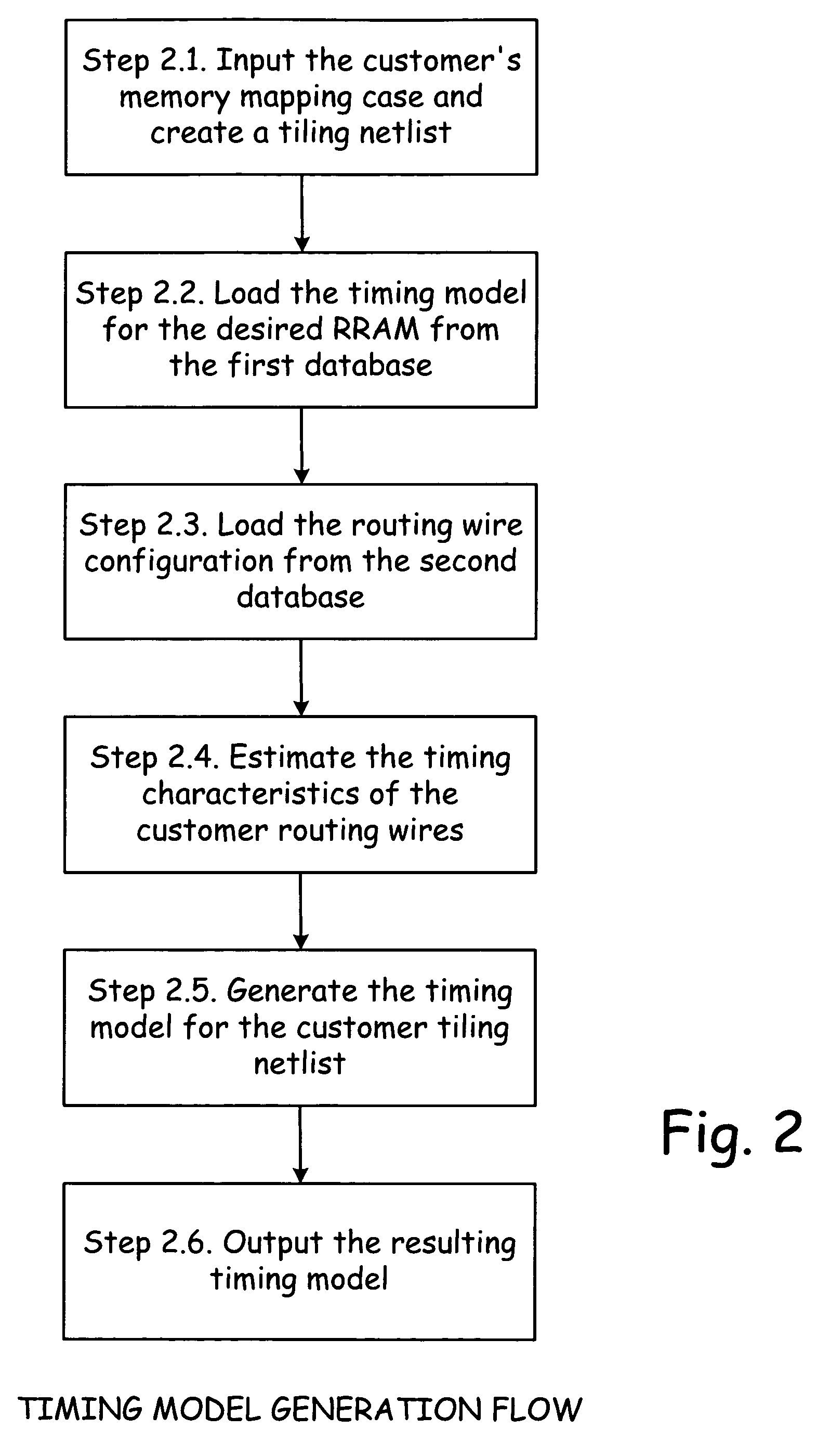RRAM memory timing learning tool
a memory timing and learning tool technology, applied in the field of integrated circuit memory design, can solve the problem that the estimation of the timing netlist for any memory mapping process may actually take a relatively small amount of time, and achieve the effect of small amount of tim
- Summary
- Abstract
- Description
- Claims
- Application Information
AI Technical Summary
Benefits of technology
Problems solved by technology
Method used
Image
Examples
Embodiment Construction
[0014]As used, herein, the terms “timing estimation” and “timing model generation” have the same meaning and are used interchangeably. The method described herein makes possible: (1) an examination of a finite number of different tiling netlists—called template tiling netlists—for one RRAM and for sets of customer memories, (2) the collection of the timing models of template cases into a database, and (3) that building of the timing model for any given case of memory mapping, or any given tiling netlist, using the information from this database.
[0015]One advantage of the preferred methods according to the present invention is that the timing database can be kept in the compact binary mode, so that dealing with this database does not require a great length of time. The timing estimation of the tiling netlist for any memory mapping process may actually take a relatively small amount of time, in comparison with current practices. This is very helpful when using memory mapping tools tha...
PUM
 Login to View More
Login to View More Abstract
Description
Claims
Application Information
 Login to View More
Login to View More - R&D
- Intellectual Property
- Life Sciences
- Materials
- Tech Scout
- Unparalleled Data Quality
- Higher Quality Content
- 60% Fewer Hallucinations
Browse by: Latest US Patents, China's latest patents, Technical Efficacy Thesaurus, Application Domain, Technology Topic, Popular Technical Reports.
© 2025 PatSnap. All rights reserved.Legal|Privacy policy|Modern Slavery Act Transparency Statement|Sitemap|About US| Contact US: help@patsnap.com



